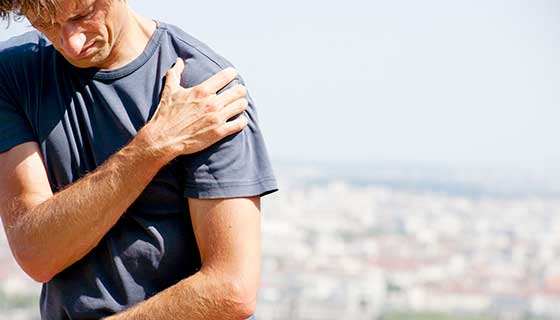I haven't exhaustively read through this entire thread but as a fellow shoulder impingement sufferer, I thought I'd at least offer up some thoughts.
First, I don't recall you ever mentioning when the shoulder hurts. Is it on the way up to the contact point, at contact, or on follow-through?
Second, I'm not a coach but in looking at your serve videos, the thing that strikes me most is how much stress you are putting on your shoulder during the deceleration phase of your serve after contact. Your deceleration path is very short and you do so with a straight arm, so all of the momentum of your racquet is transferred to your shoulder through that long lever that is your straight arm.
If you look at quarterbacks or baseball pitchers on the follow-through, they have a longer, more gentle deceleration path even though they don't have to also slow down the weight of a racquet. Many of them end up with their throwing arm wrapped around their body, just to allow a longer and more gentle deceleration phase.
In my own case, a lifetime of throwing and racquet sports, along with a severe injury to my dominant arm which involved my biceps tendon separating from my upper arm and my pec muscle tearing in half, has resulted in a shoulder that performs with less than full biomechanical efficacy. As a result, since about age 50, when I could still easily serve in the triple digits, I'll have on and off periods where some sort of shoulder joint problem makes it difficult to serve. About 70% of these problems are post-contact, and my current issue is that something catches in my shoulder if I lower my arm from an overhead position with my thumb pointing downward. This makes pronating post-contact very painful and I've mainly been able to compensate by as gently decelerating the racquet as possible, knowing that I'm going to shock my arm somewhat by stopping forearm pronation right at contact. This problem is worse for me on second serves, where the swing path is more out towards the sides, which limits how I can decelerate the racquet. I've lost a good foot of hop on my second serves because I can't swing like I used to.
Others have mentioned the "thrower's ten" or "thrower's dozen" exercises. Those are also really important, especially as you get older.
Anyhow, to see what I mean about a longer deceleration path, here's a video I shot about a year ago when I was playtesting the Pure Strike. These serves are 60-70%, because I was having shoulder problems at that time. I think there are ten serves, the first six of which would be typically how I would hit my first serve. The 7th and 8th were my first attempts at second serves, which I think didn't go well, and the last two were more typical of how I hit second serves. I think in especially the last serve, you can see how awkward my racquet deceleration looks. Though the plane of the swing is different, I'd guess the effect is relatively the same on your shoulder in your serve videos.


